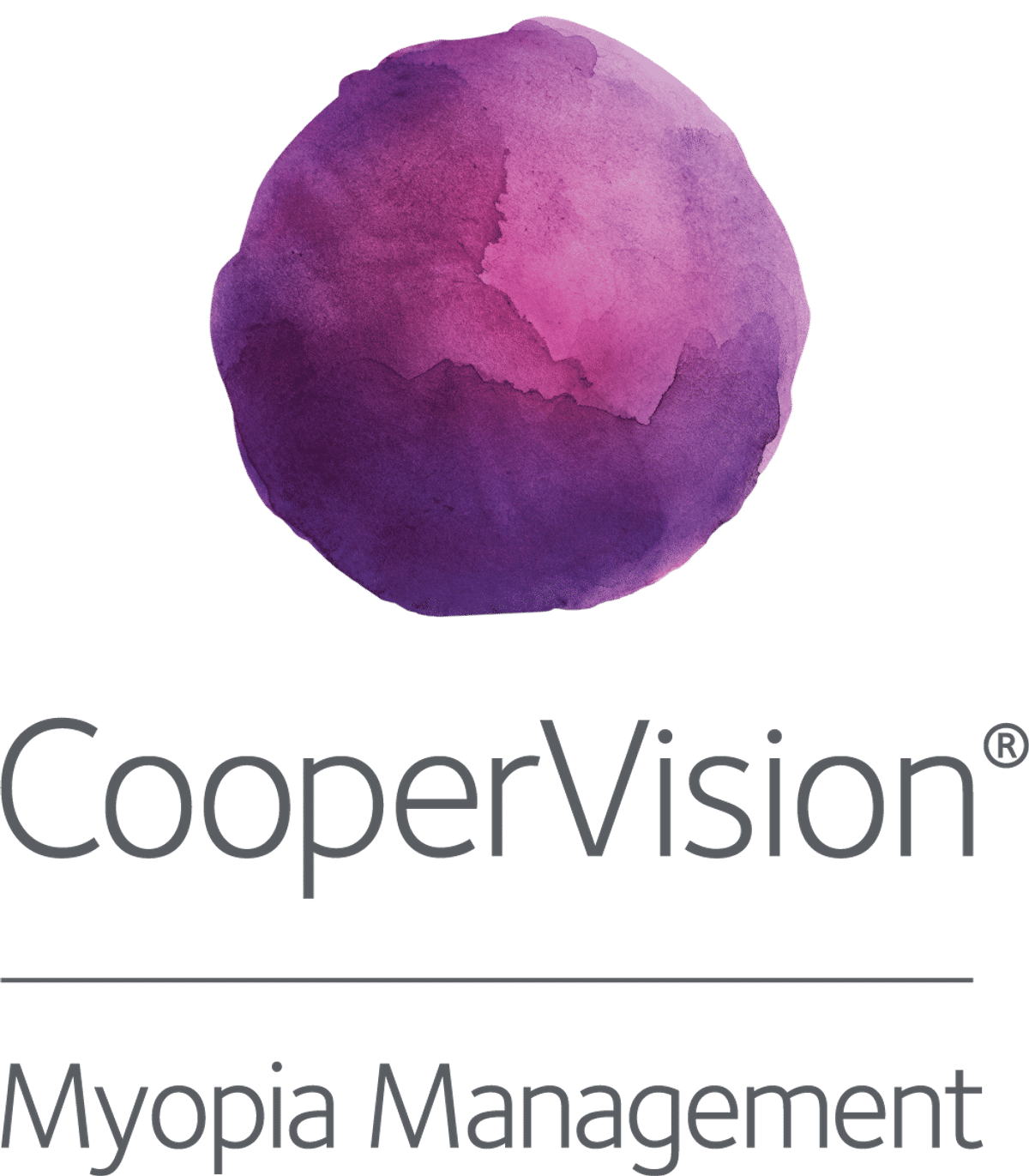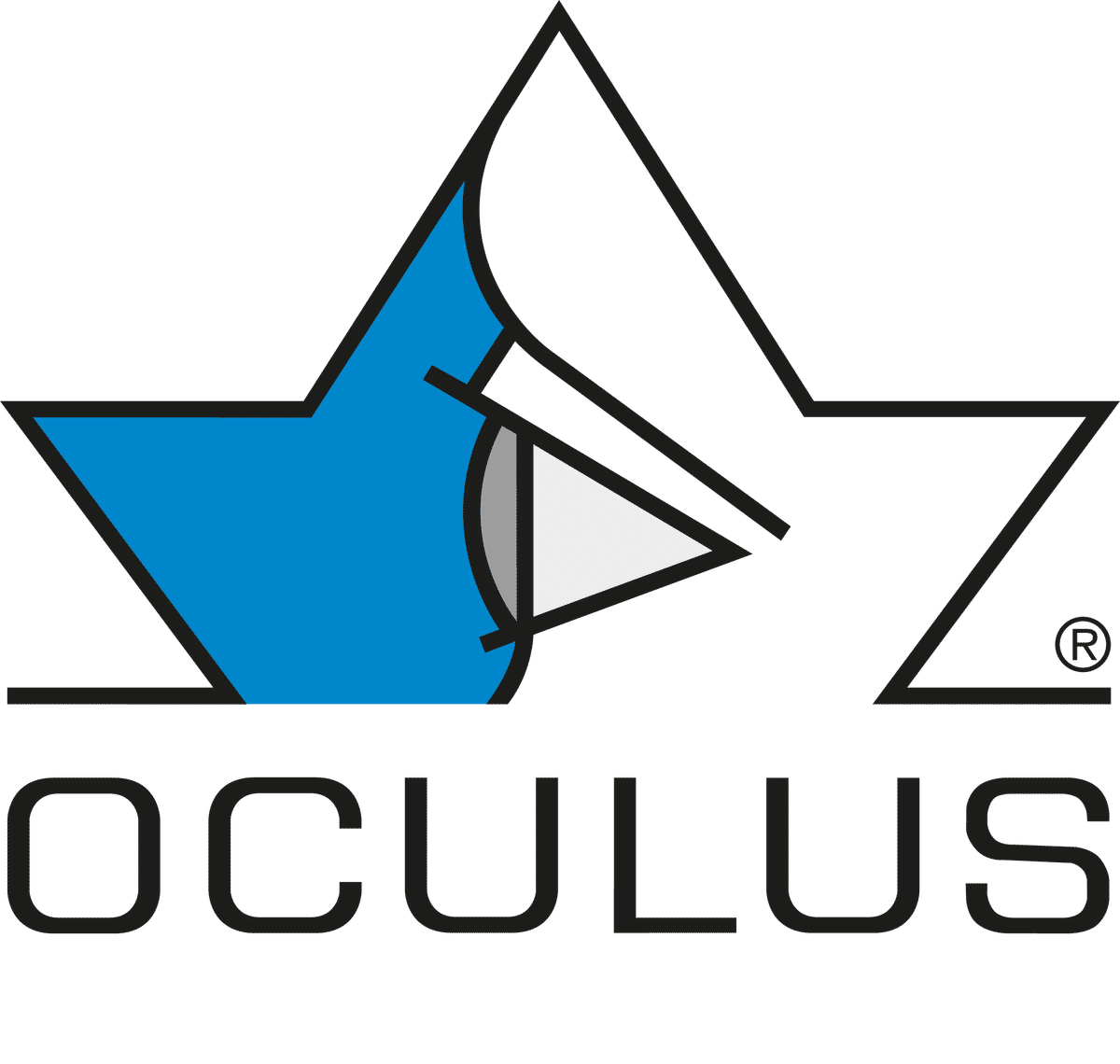Clinical
Axial length stability and shortening in clinical studies

Sponsored by
In this article:
This article explores the emerging and unexpected phenomenon of axial length shortening in children undergoing myopia control treatments.
We expect axial length to grow during childhood—whether in the context of myopia progression or even normal emmetropisation. Hence, when axial length is stable or shortens, this challenges our understanding of normal ocular growth and raises questions about the mechanisms at play. Recent studies have reported instances of axial length shortening in children receiving myopia control treatment. This article reviews the documented magnitudes of axial shortening across various treatment modalities and highlights key considerations—such as instrument repeatability—when interpreting these outcomes.
How much axial length shortening has been documented?
Axial length shortening has been documented in various studies using different myopia control interventions. Notably, these are as follows.
Atropine
In a retrospective study investigating the effects of weekly 1% atropine in Chinese children, a mean axial shortening of −0.033 mm at 7 days, −0.072 mm at 2 months, and −0.033 mm at 6 months was reported.
Spectacle lenses
There is a small amount of data that has documented axial shortening in myopia control spectacle lens wearers. In a retrospective study looking at defocus incorporated multiple segment (DIMS) lenses in Chinese children (n=489), they found that 2.7% of DIMS wearers had axial shortening of −0.13 ± 0.07 mm over 2 years that also corresponded with a reduction of myopia of 0.09D.
Orthokeratology
Axial length shortening has been reported in several large-scale retrospective studies of orthokeratology. In one study of 37 Chinese children, the mean axial shortening was −0.18 mm at 12 months, with 16.22% of subjects experiencing a reduction greater than -0.25 mm.
Extended depth-of-focus (EDOF) soft contact lenses
In a 2025 study of Japanese children (n=24) wearing SEED 1-day Pure EDOF soft contact lenses with a +1.50 add, axial length shortening of ≥-0.05 mm/year was observed in 20.8% of participants, with reductions ranging from −0.09 mm to −0.23 mm over one year.
Repeated low-level red-light therapy
Axial length (AL) shortening has been observed in children undergoing repeated low-level red-light (RLRL) therapy, with reports from both retrospective and randomized controlled trials:In a retrospective multicentre study of 434 myopic children, AL shortening of ≥-0.05 mm/year was observed in 26.5% of participants, with 17.5% showing reductions of ≥-0.10 mm/year and 4.6% of ≥-0.20 mm/year; the mean shortening among responders was −0.142 mm/year.
What is the time course?
Axial length shortening appears to follow a treatment-dependent time course, with some interventions producing early, short-term changes and others showing more gradual but sustained effects. Shortening has been observed as early as 1 week with atropine and within 1 month of initiating orthokeratology or RLRL therapy.
Table 1
Author & Year | Modality | Country | Study Design | Participants (Age) | Axial Length Shortening (Mean) | Sustained effect? | Notes |
Du et al., 2025 | 1% Atropine weekly | China | Retrospective | 694 children (3-15 yrs) | −0.033 mm (7d), −0.072 mm (2mo), −0.033 mm (6mo) | No (returned to baseline by 6-12 months) | Short-term early response only |
Chun et al., 2025 | DIMS | China | Retrospective | 489 children (3- 7 yrs) | -0.13 mm; range was ± 0.07 mm | Yes (maintained at 24 months) | Found in 2.7% of patients |
Huang et al., 2023 | HAL | China | RCT | 154 children (8- 12yrs) | -0.13 mm; range was -0.04 to -0.27 mm) | Yes (maintained at 24 months) | Found in a total of 3 patients |
Tang et al., 2023 | Ortho-K | China | Retrospective | 75 children | −0.18 mm (1yr); 16.22% had >0.25 mm | Yes (maintained to 12 months) | Compared with AL elongation group |
Hu et al., 2023 | Ortho-K | China | Retrospective | 10,093 children (mean age 11.7) | Median −0.19 mm; range −0.10 to −0.73 mm | Yes (maintained to 1 – 7 yrs) | Long-term large-scale database study |
Wang et al., 2022 | Ortho-K | China | Retrospective | 106 children (8-14 yrs) | −0.08 mm (1 mo), −0.04 mm after rewear | No (rebounded after cessation) | Shortening rebounded after cessation, reappeared with rewear |
Hazra et al., 2025 | EDOF contact lenses | Japan | Prospective | 24 children (mean age 13.9) | -0.152 mm; range was −0.09 to −0.23 mm (20.8% of children) | Yes (maintained to 12 months) | High outdoor activity linked to greater shortening |
Wang et al., 2022 | RLRL therapy | China | Retrospective multicentre | 434 children (3-17 yrs) | −0.142 mm (mean for 26.5% of children) | Yes (maintained to 12 months) | Younger children with longer baseline AL experienced greater shortening |
Wang et al., 2023 | RLRL therapy | China | Post hoc RCT | 264 children (8-13 yrs) | −0.156 mm; range was -0.05 to −0.31 mm | Yes (maintained to 12 months) | RCT with SV control group; 21.85% had >0.05 mm shortening |
Liu et al., 2025 | RLRL therapy | China | Multicentre RCT | 202 children (7-12 yrs) with high myopia (-6.00 D) | Mean −0.11 mm; 63% had >0.05 mm | Yes (maintained to 12 months) | Largest proportion of responders to date |
What are the possible mechanisms?
The mechanisms underlying axial length shortening in response to myopia control treatments are not yet fully understood, but possible theories involve a combination of transient physiological changes and perhaps longer-term structural remodelling:
- Choroidal thickening: Multiple studies suggest that choroidal thickening may contribute to short-term AL shortening by physically displacing the retinal pigment epithelium forward.
1,4-6 In the post hoc analysis of an RLRL randomized trial, children who exhibited AL shortening showed an average choroidal thickening of 56 µm.9 - Transient anterior segment changes: Although not the dominant explanation for sustained shortening, transient shifts in lens or vitreous chamber depth during accommodation have been reported in the literature as possible contributors to short-term AL changes.
11 Orthokeratology can also cause central corneal thinning (~9 µm) which may contribute to temporarily reduce AL,12 but these effects rebound after cessation. - Diurnal variations: Axial length changes are also subject to diurnal variation, with a mean amplitude found in studies of between 0.032mm and 0.046mm.
13,14 AL is longest during the day and typically shortest at night and may be due to normal biomechanical changes that occur in the eye. For example, the choroid is thicker at night and thinner during the day.14 AL changes may also partially be explained by IOP fluctuations—about 14% of AL variation was attributed to IOP changes, equating to around 18 μm change in AL from a 3.12 mmHg IOP variation.13 - Posterior segment remodelling: One proposed mechanism regarding RLRL therapy is that it may improve circulation and metabolic function in the back of the eye, helping to alleviate scleral hypoxia. This enhanced environment could promote collagen production and structural remodelling of the posterior sclera, potentially leading to sustained axial length shortening.
15-17
Mechanisms like choroidal thickening, anterior segment shifts, and diurnal variation may contribute to transient axial length changes, while posterior scleral remodelling may underlie more sustained effects. However, these proposed mechanisms remain theoretical and may not reflect true structural shortening of the eye. While the magnitude of axial length shortening observed in some studies suggests a complex interplay of physiological and structural processes, the exact nature and permanence of AL shortening remains uncertain and warrants further, longer-term investigation.
Instrument Repeatability
Interpreting these small axial length changes also requires consideration of the precision of the measuring instrument. Modern optical biometers are highly precise, with axial length repeatability typically within ±0.04 mm.
Figure 1: Axial length shortening captured with OCULUS myopia software. This is available for OCULUS Pentacam AXL Wave and Myopia Master.
This level of repeatability is particularly important when interpreting small changes in axial length, such as those reported in studies on AL shortening. Any shortening data reported with A-scan ultrasound biometry would be a far less reliable measure of the effect.
It’s essential to recognise that changes within the repeatability range of the instrument may not represent true anatomical change. In both clinical and research settings, axial length changes of less than 0.05 mm should be interpreted with caution, as they may fall within normal test–retest variability. Understanding the measurement limits of the device being used is critical to ensure accurate interpretation and to avoid overstating treatment effects.
What does this mean about myopia control?
While the documented magnitudes of axial length shortening across these studies are compelling, it would be premature to suggest that myopia—or axial elongation—can be truly reversed. The time course of this effect is not yet well established, and although some studies report sustained shortening over 12 months, others have shown that early reductions can rebound or return to baseline. As such, we should interpret these findings with caution. Rather than viewing axial shortening as a new goal for myopia management, it may instead serve as a biometric signal or predictor of treatment response. For example, the study on 1% atropine reported that axial shortening greater than −0.04 mm within the first two months was predictive of slower axial elongation over two years, effectively identifying likely responders to treatment.
Final thoughts
Axial length shortening challenges our traditional understanding of ocular growth and introduces new considerations in evaluating myopia control treatments. While the exact mechanisms and clinical significance of this phenomenon are still being explored, current evidence suggests that early AL shortening may offer valuable insight into treatment response. As research progresses, continued attention to measurement precision, treatment time course, and individual variability will be essential in translating these findings into meaningful clinical outcomes.
Meet the Authors:
About Jeanne Saw
Jeanne is a clinical optometrist based in Sydney, Australia. She has worked as a research assistant with leading vision scientists, and has a keen interest in myopia control and professional education.
As Manager, Professional Affairs and Partnerships, Jeanne works closely with Dr Kate Gifford in developing content and strategy across Myopia Profile's platforms, and in working with industry partners. Jeanne also writes for the CLINICAL domain of MyopiaProfile.com, and the My Kids Vision website, our public awareness platform.
This content is brought to you thanks to an educational grant from
References
- Tan X, Xiong R, Zeng J, et al. Axial Shortening in Myopic Children after Repeated Low-Level Red-Light Therapy: Post Hoc Analysis of a Randomized Trial. Ophthalmol Ther. Apr 2023;12(2):1223-1237. [link]
- Luo S, Zhang L, Hu Y, et al. Scleral hypoxia is a target for myopia control. Proc Natl Acad Sci U S A. Jul 2018;115(30):E7091-E7100. [link]
- Wilson ME, Trivedi RH. Axial length measurements by contact and immersion techniques in pediatric eyes with cataract. Ophthalmology. Mar 2011;118(3):498-502. [link]
- Xu H, Mungalsingh MA, Selimos Z, et al. Suitability of multifunction devices Myah and Myopia Master for monitoring myopia progression in children and adults. Ophthalmic Physiol Opt. Jul 2024;44(5):1017-1030. [link]
- Wang J, Zhang Z, Shen L, et al. Axial length shortening after orthokeratology and its relationship with myopic control. BMC Ophthalmol. Jun 2022;22(1):243. [link]
- Collins MJ, Read SA, Hughes RPJ, et al. Axial Elongation During Short-Term Accommodation in Myopic and Nonmyopic Children. Invest Ophthalmol Vis Sci. Mar 2022;63(3):12. [link]
- Cheung MC, Chun RKM, Kwok DK, et al. Real-world outcomes of Defocus Incorporated Multiple Segments lenses on retarding axial elongation in myopic children and adolescents. Front Med. Jan 2025;11:1416286. [link]
- Cheung S, Cho PC, Collins MJC, et al. Short-term changes in choroidal thickness and axial length in children fitted with orthokeratology lenses of different compression factors. Invest Ophthalmol Vis Sci. Jul 2018;58:1786. [link]
- Chen L, Zhai Z, Zeng Y, et al. Long-Term Axial Length Shortening in Myopic Orthokeratology: Incident Probability, Time Course, and Influencing Factors. Invest Ophthalmol Vis Sci. Dec 2023;64(15):37. [link]
- Collins MJ, Read SA, Iskander DR. Diurnal variation of axial length, intraocular pressure, and anterior eye biometrics. Invest Ophthalmol Vis Sci. Jul 2008;49(7):2911-8. [link]
- Chen S, Zhao H, Zhao M, et al. Long-term follow-up of changes in ocular biometric parameters in orthokeratology lens wearers with relatively large-scale axial length reduction. Eye Vis (Lond). Feb 2023;10(1):6. [link]
- Yang A, Spiegel DP, Wu J, et al. Effect of spectacle lenses with aspherical lenslets on choroidal thickness in myopic children: a 2-year randomised clinical trial. Br J Ophthalmol. Nov 2023;107(12):1806-1811. [link]
- Zhu Z, Kong X, Yuan Y, et al. Effect of Repeated Low-Level Red-Light Therapy for Myopia Control in Children: A Multicenter Randomized Controlled Trial. Ophthalmology. May 2022;129(5):509-519. [link]
- Zhang H, Wei R, Shi X, et al. Axial Shortening Effects of Repeated Low-level Red-light Therapy in Children With High Myopia: A Multicenter Randomized Controlled Trial. Am J Ophthalmol. Feb 2025;270:203-215. [link]
- Wildsoet CFW, Metlapally RM. Scleral Mechanisms Underlying Ocular Growth and Myopia. Prog Mol Biol Transl Sci. Jun 2015;134:241-248. [link]
- Collins MJ, Chakraborty R, Read SA. Diurnal variations in axial length, choroidal thickness, intraocular pressure, and ocular biometrics. Invest Ophthalmol Vis Sci. Jul 2011;52(8):5121-9. [link]
- Collins MJ, Berntsen DA, Bradley A, et al. IMI - Clinical Myopia Control Trials and Instrumentation Report. Invest Ophthalmol Vis Sci. Feb 2019;60(3):M132-M160. [link]
- Xiong R, Morgan IG, Chen Y, et al. Clinically Significant Axial Shortening in Myopic Children After Repeated Low-Level Red Light Therapy: A Retrospective Multicenter Analysis. Ophthalmol Ther. Apr 2023;12(2):999-1011. [link]
- Ding L, Huang J, Chen J, et al. Efficacy of weekly dose of 1% atropine for myopia control in Chinese children. Br J Ophthalmol. Jan 2025;109(2):264-272. [link]
- Oyama S, Hazra D, Takeuchi R, et al. Axial Length Stabilization or Reduction in over 40% of Patients Wearing Extended Depth-of-Focus Contact Lenses. J Clin Med. Mar 2025;14(5). [link]
- Chan B, Cheung SW, Cho P. Repeatability and agreement of two A-scan ultrasonic biometers and IOLMaster in non-orthokeratology subjects and post-orthokeratology children. Clin Exp Optom. May 2006;89(3):160-8. [link]
Enormous thanks to our visionary sponsors
Myopia Profile’s growth into a world leading platform has been made possible through the support of our visionary sponsors, who share our mission to improve children’s vision care worldwide. Click on their logos to learn about how these companies are innovating and developing resources with us to support you in managing your patients with myopia.












